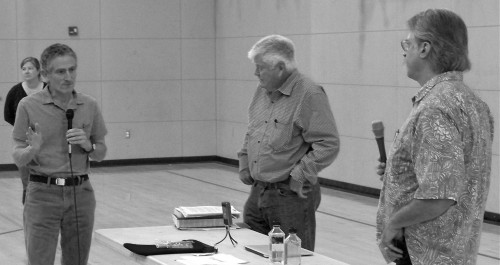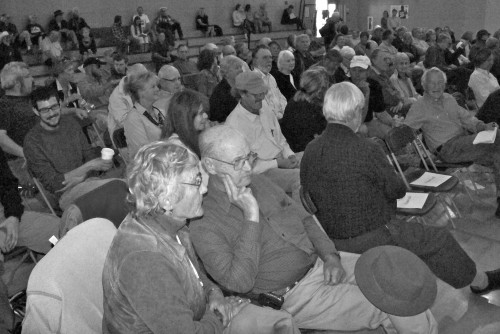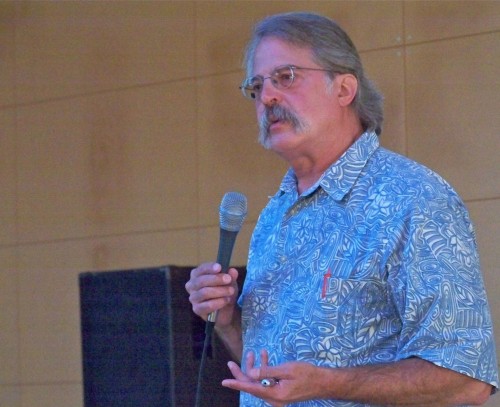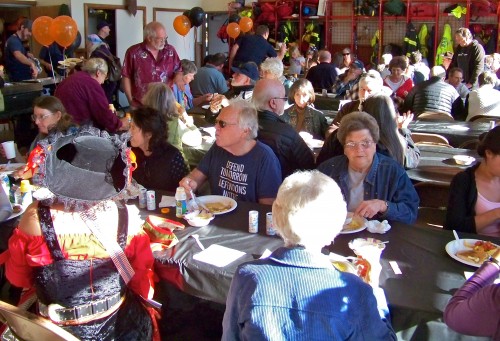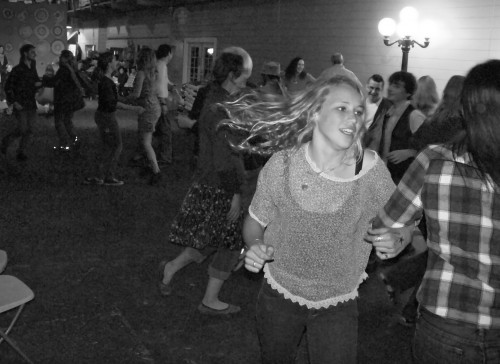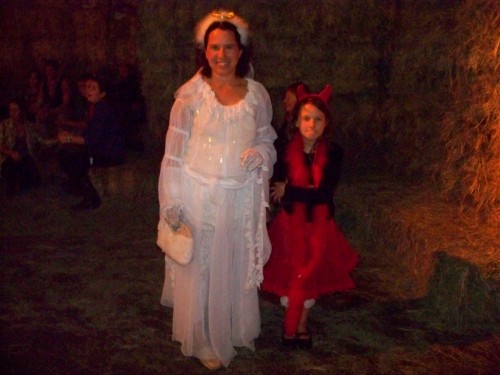Mon 5 Dec 2011
Who’s been naughty or nice
Posted by DavidMitchell under General News, Photography, Point Reyes Station
[4] Comments
We’ll start with who deserves coal in their stockings come Christmas morning. At the top of my personal list is the Marin Independent Journal, which cheated me out of $32.65 last Oct. 22. Here’s the story in brief.
Lynn and I hand out about three loaves of bread to foxes and raccoons every evening. If we buy cheap white bread for 99 cents a loaf at Safeway, this comes to about $21 per week. If we bought the same amount of bread in West Marin, where bread typically costs about $5 a loaf, the total cost would be about $105 per week (or almost $5,500 per year), far more than we can afford. Which is why we buy it at Safeway.
On Oct. 22, I was leaving the San Anselmo Safeway with a cart full of bread when an Independent Journal vendor just outside the door stopped me, saying I could get half a year of the paper free of charge if I merely paid for the Sunday editions.
That came to $32.65, so I paid the vendor in cash and got a receipt. He said my IJs would start being delivered to my house in about a week. But none ever arrived, so on Nov. 6, I emailed the IJ’s circulation department to complain and asked that it look into the problem.
When I received no answer to my email, I wrote the IJ again on Nov. 11, saying I was cancelling my subscription and wanted my money back. If the paper didn’t send the money immediately, I warned, I would take the IJ to small claims court. A few days after that email, a woman in circulation called to say I should have been receiving my subscription. Would I like to start it now?
I replied that the whole experience had soured me on the IJ and that I merely wanted my money refunded. She said she’d have a check sent to me. Another three weeks have now passed without my refund, and I’ve started my small claims lawsuit. I’m certainly glad I saved my receipt to show the judge.
My advice? Don’t buy a subscription from an IJ vendor. It may well be a ruse to get your money without providing you with anything but frustration in return.
Who’s been nice
Point Reyes Station celebrated the start of the Christmas season Friday night with luminaria lining the main street and the lighting of the town Christmas tree, which is located between Wells Fargo Bank and the Palace Market at the far end of the street.
Toby’s Feed Barn held Christmas in the Barn, which included a visit from Santa Claus, with whom many young people wanted to be photographed sitting on his lap. Jewelry, crafts, and ethnic clothing for sale made the scene particularly festive.
In the gallery at Toby’s Rich Clarke of Marshall exhibited his photography while his son Kevin of Oakland showed off his paintings, furniture, and wooden sculpture. They each said they’ve been influenced by the other.
Meanwhile at the other end of town, the Dance Palace hosted a crafts fair that filled the church space (seen here) and the auditorium. Along with arts and crafts, jams, soaps, and jewelry were for sale.
In the main auditorium, Point Reyes Station painter Christine DeCamp discusses her colorful art with visitors to the show.
Who’s the naughtiest of all? “The US Postal Service wants to close your North Bay Processing and Distribution mail facility [in Petaluma] and send all of your mail to Oakland to be processed,” the American Postal Workers Union warned last week.
“If your ZIP Code starts with 954 or 949, this affects you. If this happens, all your mail will be delayed by at least one day! This will delay delivery of your checks and bills, your prescriptions, your packages, your movies, your absentee ballots, and everything else you receive in the US mail.
“Under this plan,” the Postal Workers Union adds, “if you want prompt delivery, you will have to pay high Express Mail rates.
“The USPS is required to notify affected customers and hold a meeting for public input. This meeting has already been held. Were you notified?”
The union has urged the public to send its concerns to Theresa Lambino, Manager, Consumer and Industry Contact, San Francisco District, Box 193000, San Francisco, CA 94188-3000.
However, your letters were supposed to be postmarked by this past Saturday. Unfortunately, the mails are already so slow that most people didn’t have time to respond before the deadline. Personally, I’d send a letter anyhow.
If you want to see how we got into this mess, check my Nov. 6 posting.









